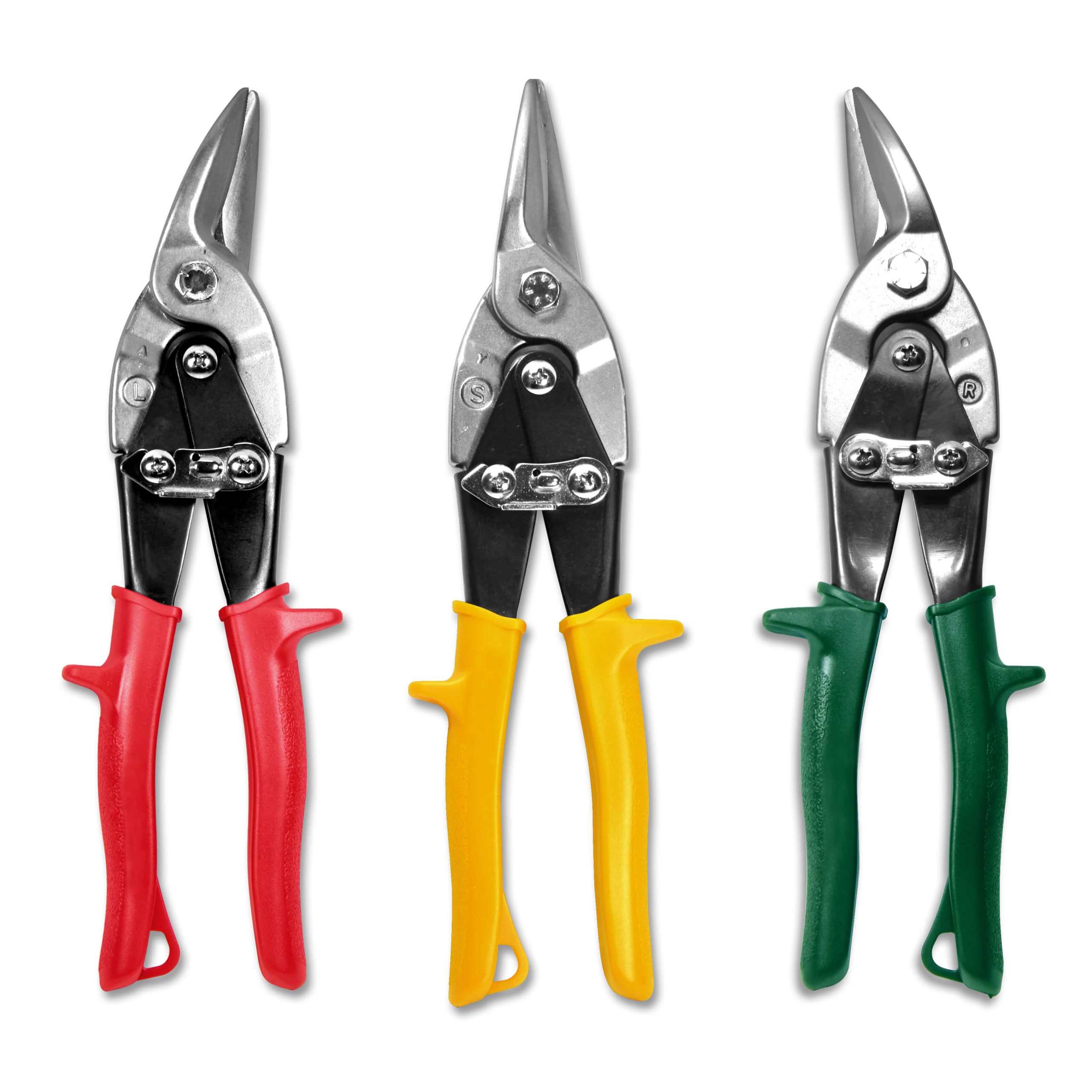Ever wrestled with stubborn sheet metal? Aviation snips are your solution. These powerful shears slice through thin, tough materials like aluminum and vinyl. Whether you’re a professional or a DIY enthusiast, the right pair of snips can transform your projects. This guide covers everything about aviation snips, from types and uses to top models and maintenance, empowering you to cut clean and efficiently.
Understanding Aviation Snips
Aviation snips, also known as compound-action snips, are specialized cutting tools designed for sheet metal and other thin, tough materials. Their compound leverage mechanism amplifies cutting power, allowing you to slice through thicker gauges with ease. While originating in aircraft manufacturing, these versatile tools are now essential in various fields, from automotive repair to HVAC installations and DIY projects.
Types of Aviation Snips
Aviation snips are color-coded by cutting direction, simplifying selection:
- Yellow (Straight): Ideal for straight lines and gentle curves.
- Green (Right-Hand Curves): Designed for clockwise (rightward) curves and circles.
- Red (Left-Hand Curves): Perfect for counter-clockwise (leftward) curves and circles.
Beyond these, specialized snips cater to specific needs:
- Offset Snips: Angled blades provide clearance in tight spaces, available in left, right, and straight cutting variations.
- Bulldog Snips: Heavy-duty snips with short, powerful jaws for thicker materials and notching.
- Long-Cut Snips: Extended blades facilitate long, clean cuts requiring extended reach.
- Upright Snips: 90-degree blades are excellent for overhead work and awkward corners.
Materials and Cutting Capacity
Aviation snips cut various materials, but thickness limits vary:
| Material | Maximum Thickness (Approximate) | Notes |
|---|---|---|
| Steel | 18-gauge | Common sheet metal thickness. |
| Stainless Steel | 26-gauge | Typically thinner due to increased hardness. |
| Aluminum | Varies | Depends on alloy and hardness. |
| Plastic, Vinyl | Varies | Generally suitable for thinner types. |
| Cardboard, Leather | Varies | Easily cut with most snips. |
| Rubber, Foam | Varies | Density influences ease of cutting. |
| Wire, Mesh | Varies | Suitable for thinner gauges. |
Using and Maintaining Aviation Snips
A Step-by-Step Cutting Guide
- Safety First: Always wear safety glasses and gloves to protect against metal shards.
- Secure Your Workpiece: Clamp the material for stability, control, and safety.
- Choose the Right Snip: Select the color-coded snip matching your desired cut.
- Maximize Cutting Surface: Place material deep within the jaws for leverage and clean cuts.
- Cut Smoothly: Apply even pressure and avoid jerky motions for optimal results.
Essential Maintenance Tips
Proper maintenance ensures peak performance:
- Clean After Use: Wipe blades to remove debris and prevent corrosion.
- Lubricate Regularly: Oil the pivot point for smooth operation.
- Sharpen as Needed: Use a diamond file or sharpening stone to restore cutting edge.
- Store Safely: Store closed, preferably with a safety latch.
Choosing the Right Snips
Consider these factors when purchasing:
- Blade Material: Hardened or cobalt steel offers durability and long-lasting sharpness.
- Handle Design: Ergonomic handles enhance comfort during extended use.
- Cutting Capacity: Ensure the gauge rating matches your material thickness.
- Brand Reputation: Reputable brands often signify quality, durability, and warranties.
Additional Tips & Tricks
- Practice Improves Precision: Experience enhances your cutting technique.
- Score for Intricate Cuts: Lightly scoring the metal with a utility knife guides the snips.
- Specialized Snips: Consider specialized snips for frequent, specific tasks.
Aviation Snips vs. Tin Snips
While both cut metal, they have distinct characteristics:
| Feature | Aviation Snips | Tin Snips |
|---|---|---|
| Ideal Cuts | Curves, Intricate Shapes | Straight Cuts, Broad Curves |
| Metal Thickness | Thinner Gauges | Thicker Gauges |
| Cutting Power | High (Compound Levers) | Moderate |
| Handles | Spring-loaded, Color-Coded | Not Spring-loaded |
| Best Use Cases | HVAC, Metal Art, Intricate Designs | Roofing, Straight Cuts, Demolition |
Aviation snips, with their compound leverage and color-coding, excel at intricate cuts on thinner metals. Tin snips, though simpler, provide the power for thicker gauges and straight cuts. Some research suggests aviation snips might handle slightly thicker gauges than traditionally thought, but this depends on the tool and technique. Choosing the right tool depends on your specific needs.
Left vs. Right Aviation Snips
Navigating curves requires understanding left and right-cut snips:
| Snip Type | Handle Color | Cut Direction | Blade Position |
|---|---|---|---|
| Left-Cut | Red | Counter-Clockwise | Upper blade left of lower |
| Right-Cut | Green | Clockwise | Upper blade right of lower |
| Straight-Cut | Yellow | Straight | Blades aligned |
Left-cut snips are for leftward (counter-clockwise) curves, with the upper blade positioned left of the lower blade. This directs waste material away, ensuring a clear cutting line. Right-cut snips are designed for rightward (clockwise) curves, with the upper blade positioned to the right. Choosing the correct snip prevents jagged edges and material waste. Straight snips, marked by yellow handles, handle straight cuts and gentle curves. While current color-coding is standard, some debate exists regarding universal standardization. Ongoing research explores new materials and ergonomics for enhanced performance and comfort. Always refer to manufacturer instructions for specific features.
Discover the allure of vibrant city life at 437 Madison Avenue NY NY, a prestigious address where opportunity and elegance converge.
- Dora the Explorer Wipe-Off Fun: Safe & Mess-Free Activities for Little Explorers - April 18, 2025
- Does Lemongrass Repel Mosquitoes? Fact vs. Fiction + How to Use It - April 18, 2025
- Do Woodchucks Climb Trees?Fact vs. Fiction - April 18, 2025










